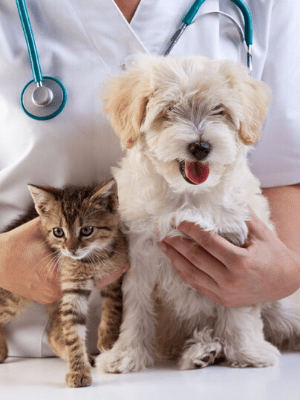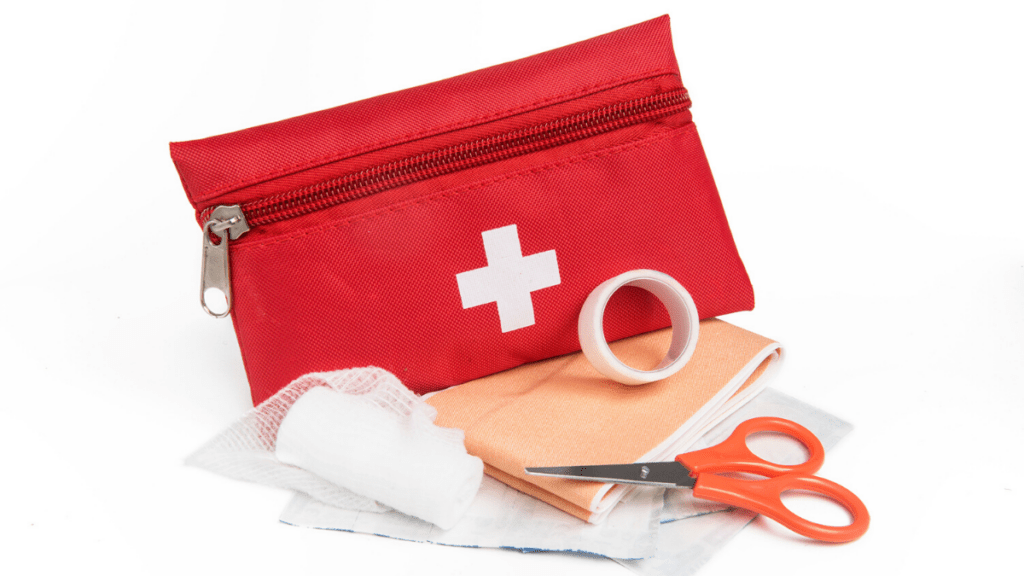As we close out National Pet Week, we’d like to say thank you to all of our readers. It means a lot to know that the information we provide is both informative and beneficial to the many pet-parents out there. Today’s discussion is particularly relevant as we move our way into the summer months and our pets spend more time outdoors: always be prepared for a pet emergency. Emergencies can happen anywhere, at any time. As pet owners, it’s our responsibility to know what to do if any of our furry family members are injured or sick.
What to do when your pet has an emergency
The first thing you should always do is contact your veterinarian or local animal emergency clinic. If the emergency involves ingestion of a toxic substance, call the APSCA Animal Poison Control Center.
In order to always be prepared, make sure to keep the following information handy:
- The phone number and address for your local animal emergency clinic
- Your vet’s phone number
- The phone number for the ASPCA Animal Poison Control Center
How do I know if my pet's condition is severe enough for a clinic visit?
If your pet is experiencing any of the following, contact your vet:
- difficulty breathing or coughing/gagging
- blood in the urine or stool
- inability to pass stool, or pain associated with urinating or passing stool
- minor eye injury
- seizures
- obvious signs of pain
- extreme anxiety
- 1-2 episodes of vomiting or diarrhea
- refusal to drink any fluids for more than 24 hours
If your pet is experiencing any of the following, get in the car and drive to a clinic ASAP:
- bleeding that doesn’t stop within 5 minutes
- bleeding from the nose, mouth, rectum
- choking
- respiratory distress
- coughing up blood
- inability to urinate
- consumption of a poisonous substance
- fractured bones
- major eye injury
- inability to move legs or severe lameness
- staggering
- heat stress/heat stroke
- 3+ episodes of vomiting or diarrhea in a 24-hour period
- unconsciousness
How to assemble a first-aid kit
Panic and emergencies usually go hand-in-hand. Having a first-aid kit available (and knowing how to use it) will help you to feel better prepared as a pet-owner and allow you to handle emergencies with calm and confidence. Remember, first aid is not a substitute for proper veterinary care; rather, administering first aid immediately after an emergency may give clinical treatment a better chance of success.
Click here for a list of supplies that should be included in your home first-aid kit. Having these supplies on-hand is only helpful if you know how to use them. For more information about how to handle specific types of emergencies, visit the AVMA website.
Click here for a list of supplies that should be included in your home first-aid kit. Having these supplies on-hand is only helpful if you know how to use them. For more information about how to handle specific types of emergencies, visit the AVMA website.
Planning ahead
Natural disaster — including flood, fire and tornadoes — can occur suddenly and without warning. You and your family may already have a plan in place, just in case you are affected by a natural disaster. But does this plan include your pet? Pets who experience disasters can be injured or lost. Make sure to incorporate your pet into your family’s plan and make sure that everyone in your household is briefed. Keep a first-aid kit available in case it is needed. It may also be helpful to keep an evacuation kit ready, in case you and your pet ever need to leave your home for an extended period of time. Include at least a two-week supply of your pet’s food and medications, along with medical records and microchip numbers, a collar with identification, a harness and leash, bed and blankets, toys, travel supplies like carriers/crates, and feeding bowls.
Sometimes planning ahead doesn’t always involve a crisis. What is your plan for when you and your family are out of town? Who will be caring for your pets? Who will be making their medical decisions if they require veterinary care? Will you be reachable to be involved in those decisions, or do you need to inform your pet’s temporary caregiver of your personal/family preferences before you leave? Are there certain tests or procedures that you would not authorize? Are there financial limitations that you need to communicate? How will you pay for emergency medical bills while you are away? These are all important questions, and it may be easiest and most efficient if you have instructions and preferences written down, to then share with family or friends.
Sometimes planning ahead doesn’t always involve a crisis. What is your plan for when you and your family are out of town? Who will be caring for your pets? Who will be making their medical decisions if they require veterinary care? Will you be reachable to be involved in those decisions, or do you need to inform your pet’s temporary caregiver of your personal/family preferences before you leave? Are there certain tests or procedures that you would not authorize? Are there financial limitations that you need to communicate? How will you pay for emergency medical bills while you are away? These are all important questions, and it may be easiest and most efficient if you have instructions and preferences written down, to then share with family or friends.
As you can see, preparing for a pet emergency involves quite a bit of planning and discussion. It may seem like a lot of work for something that might never happen, and it can be tempting to just “wing it” if an emergency arises. Don’t fall into that line of thought. If your pet ever experiences an emergency, you and your pet will both be grateful that you took the time to prepare yourself.







